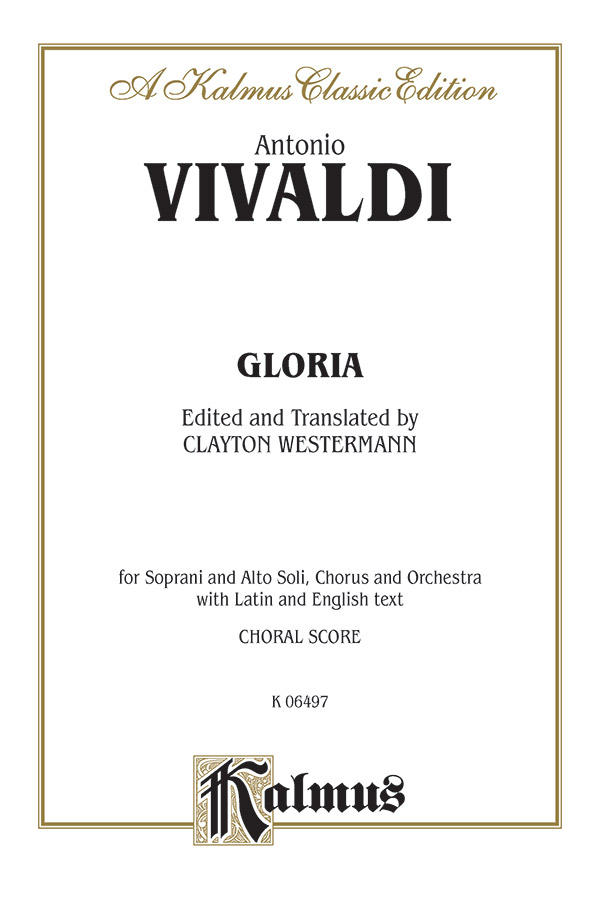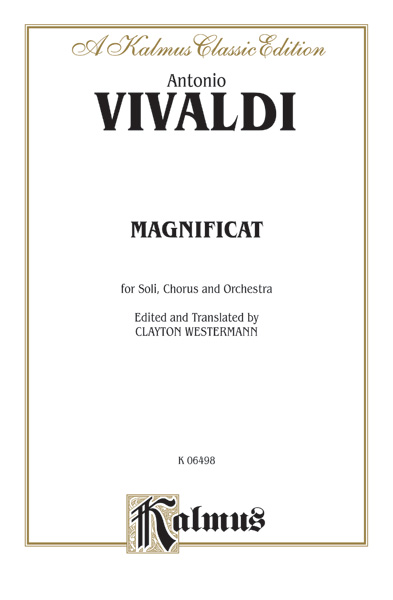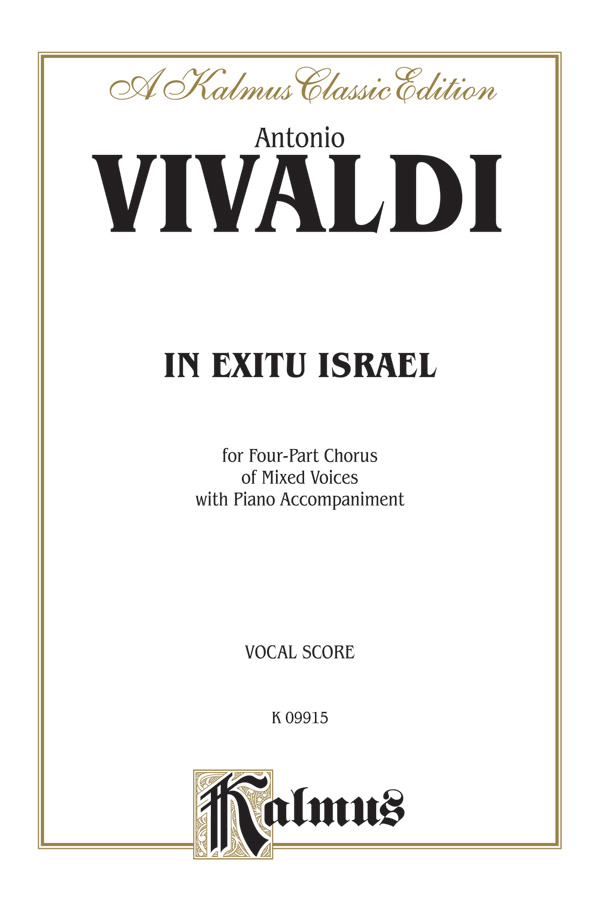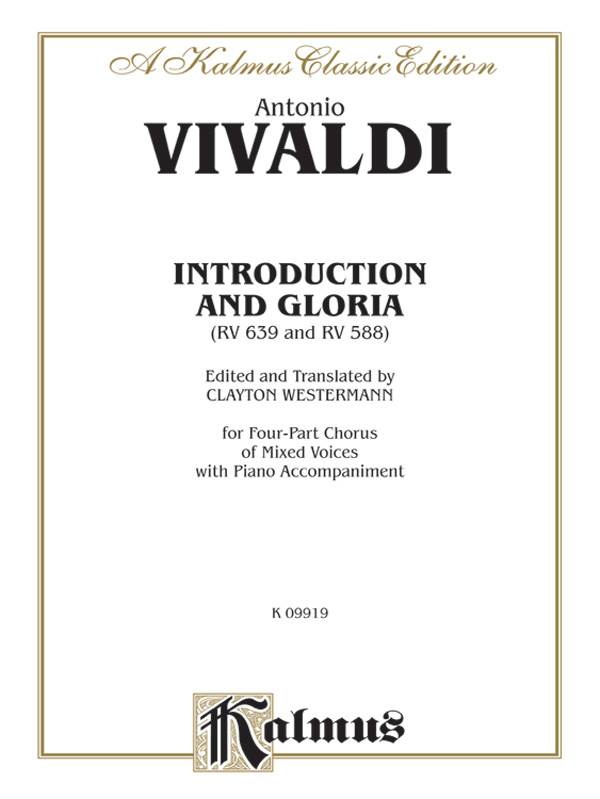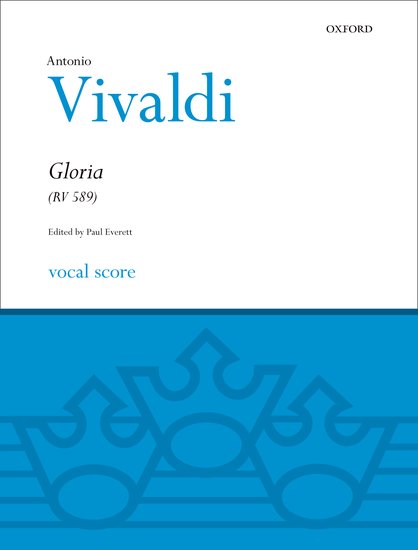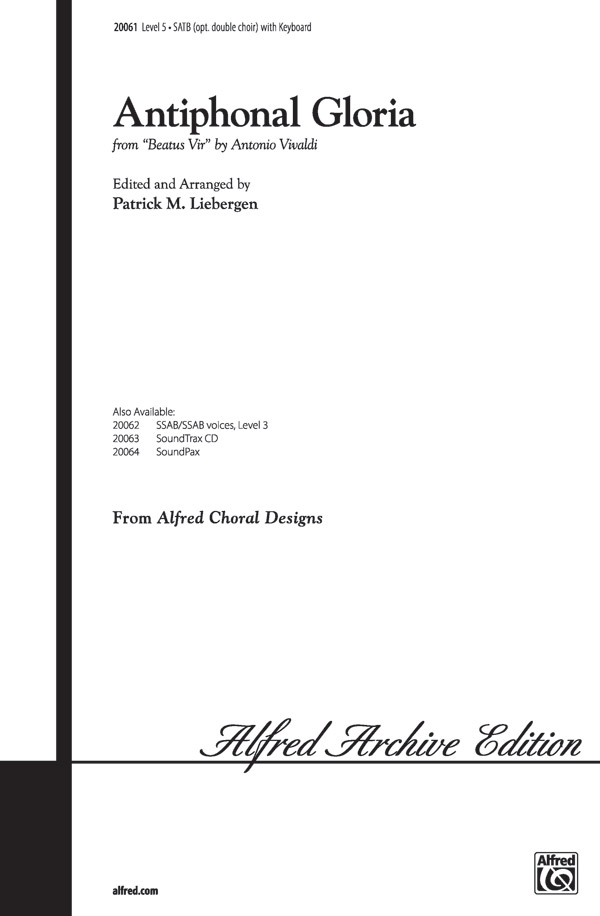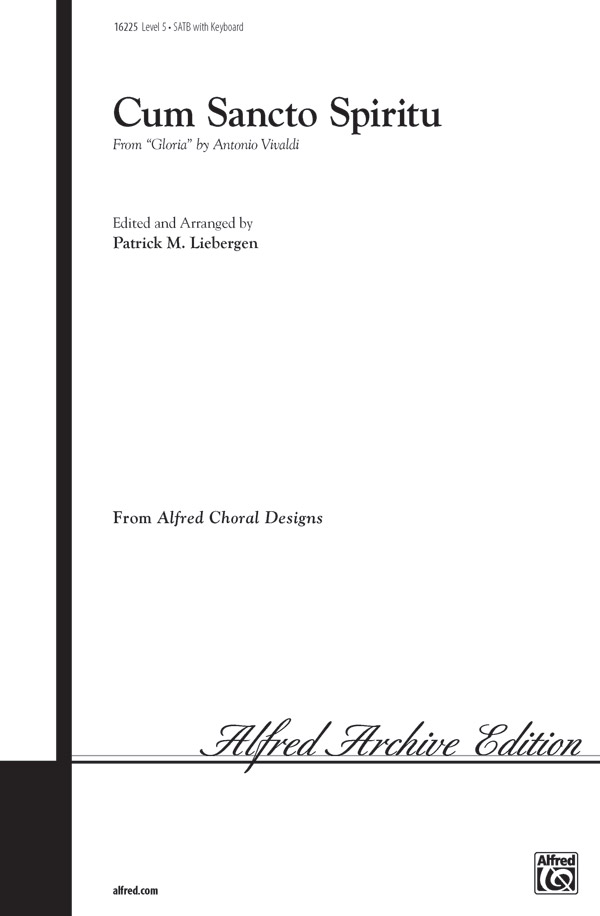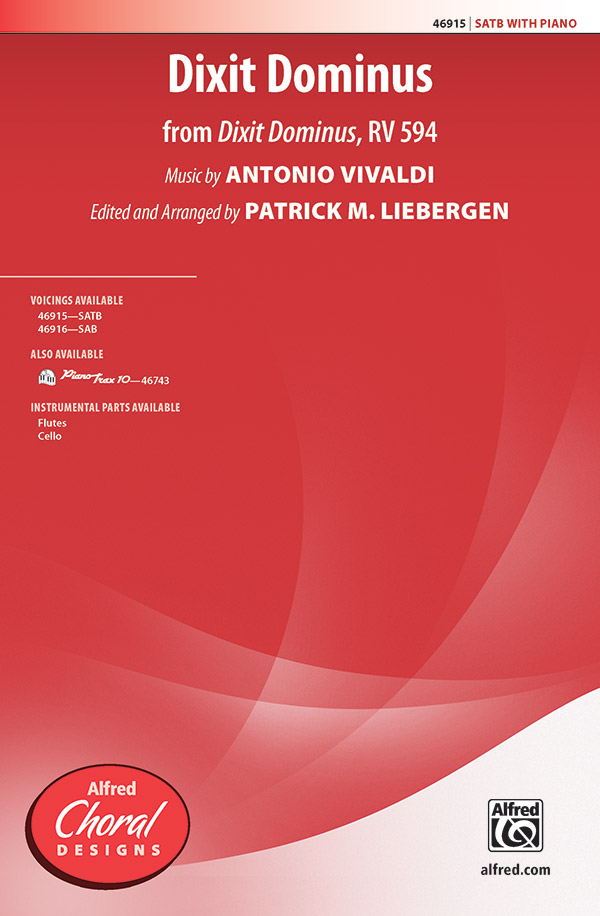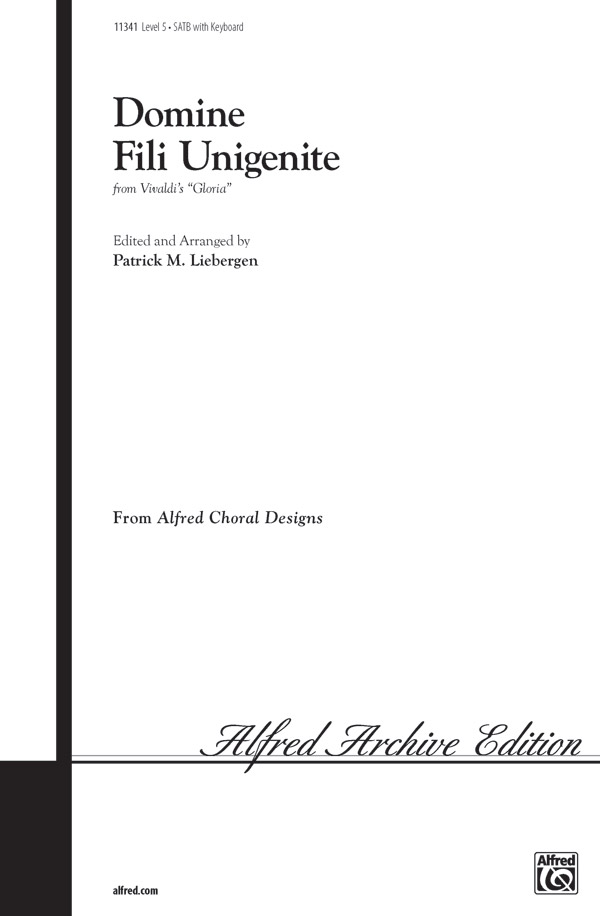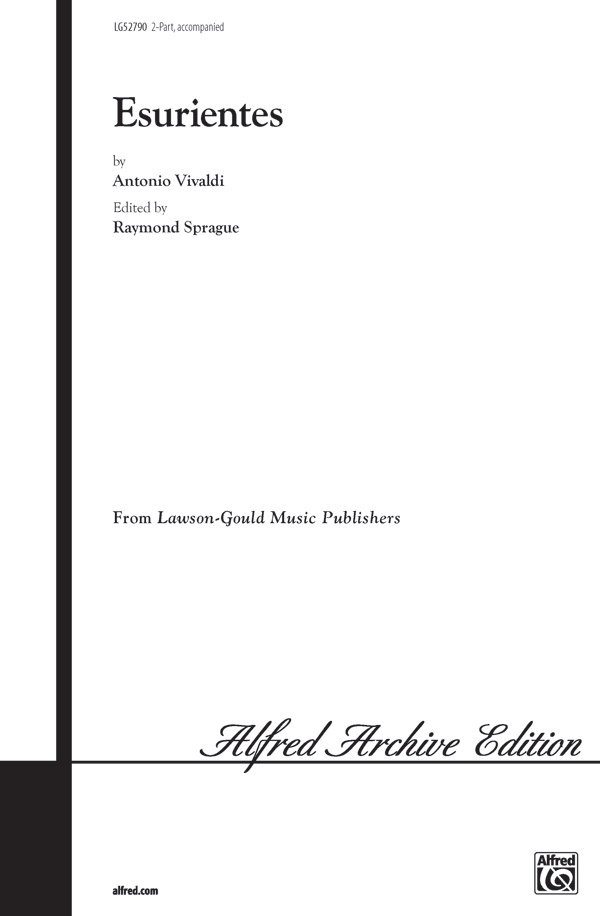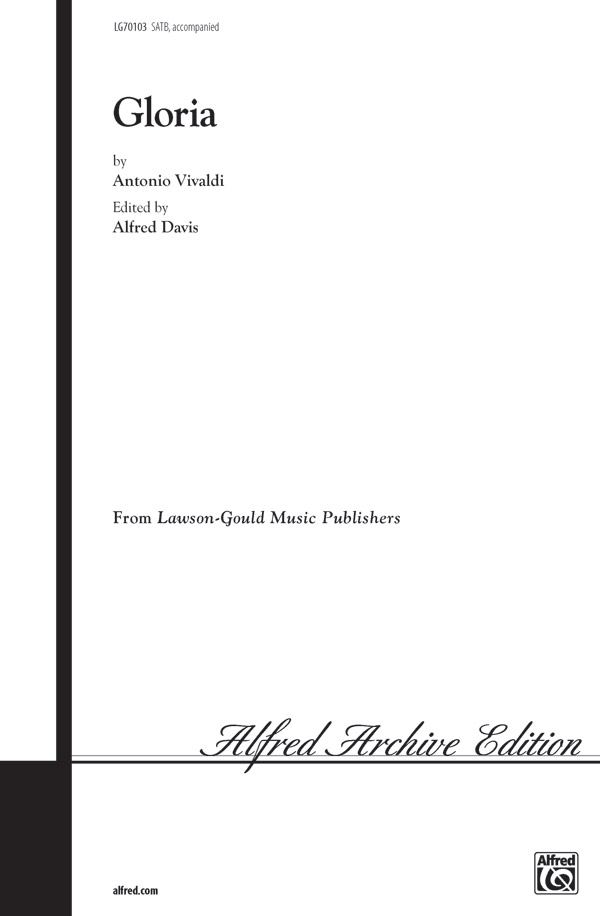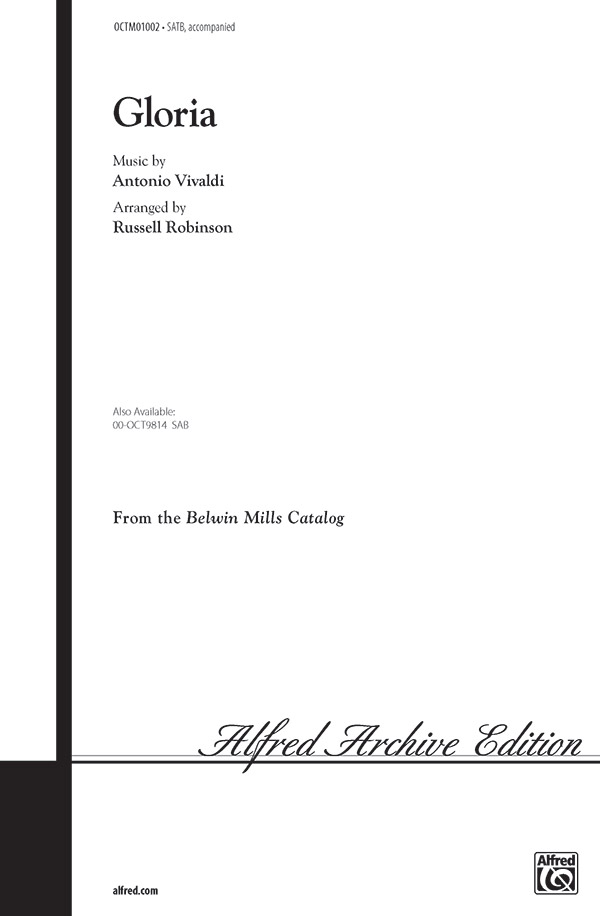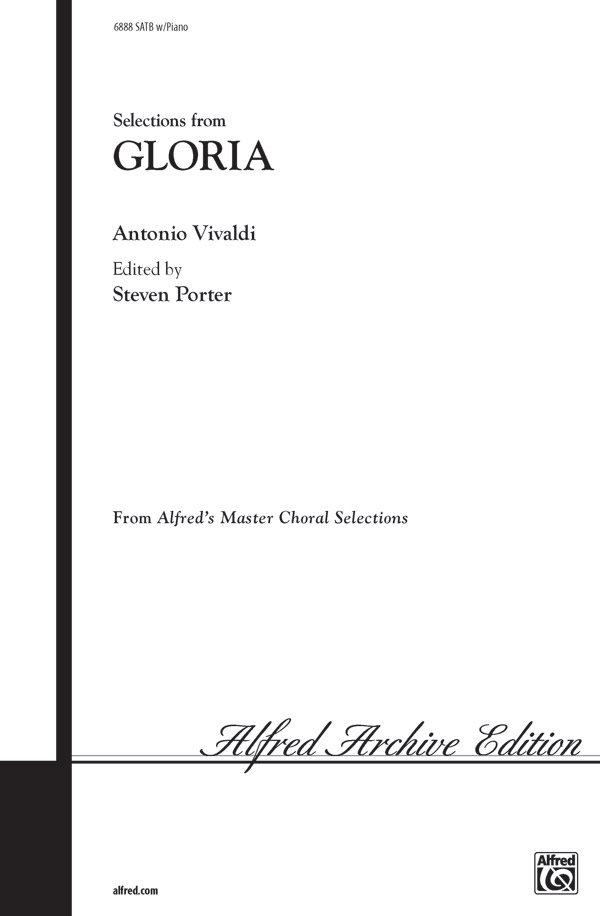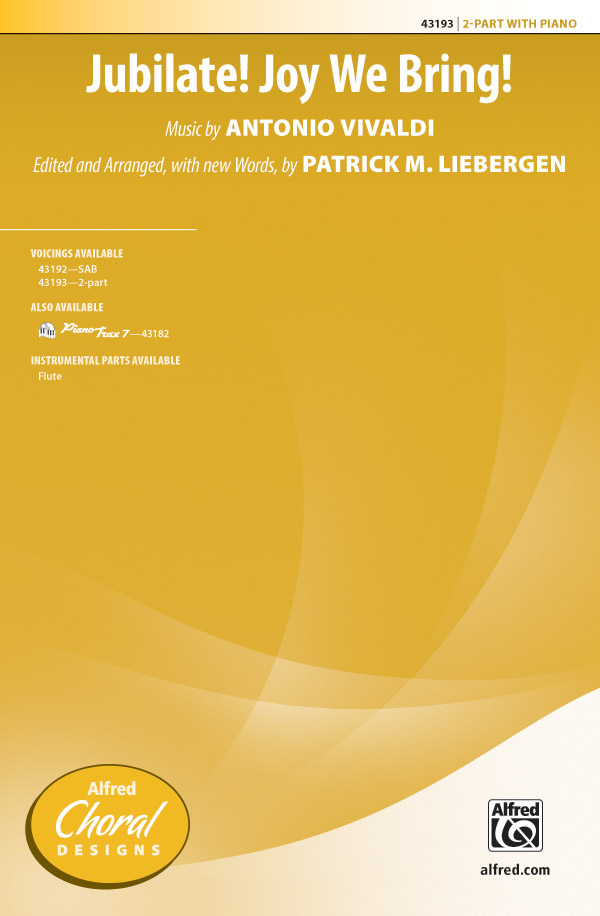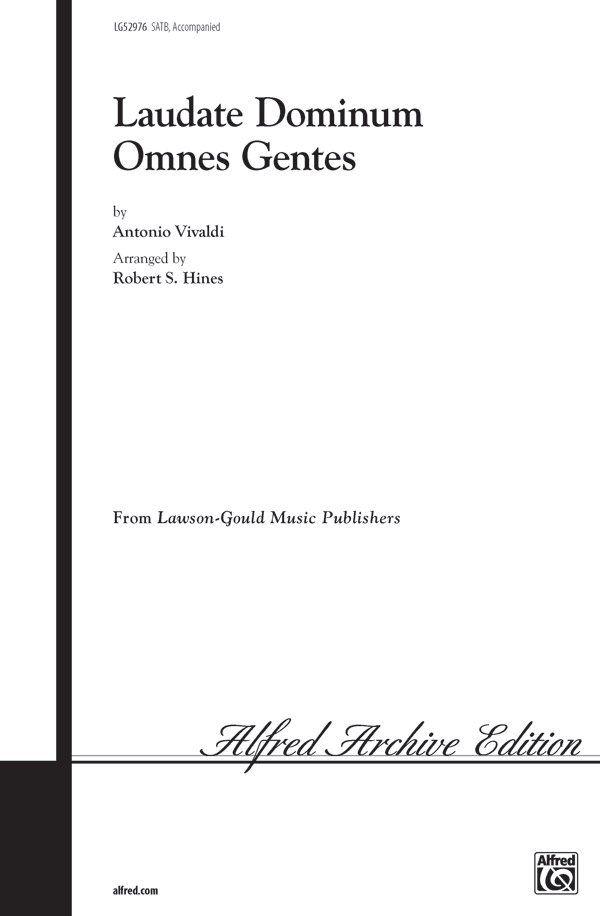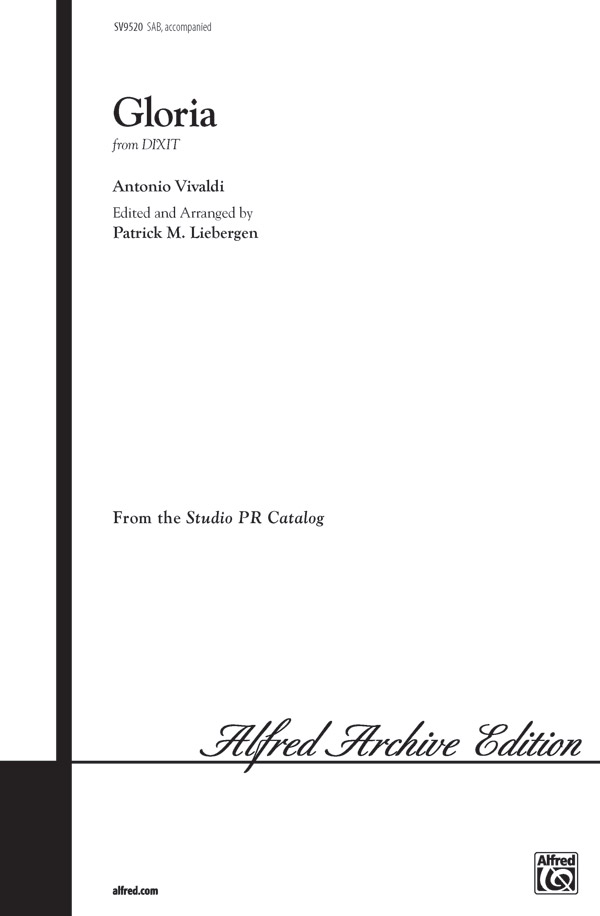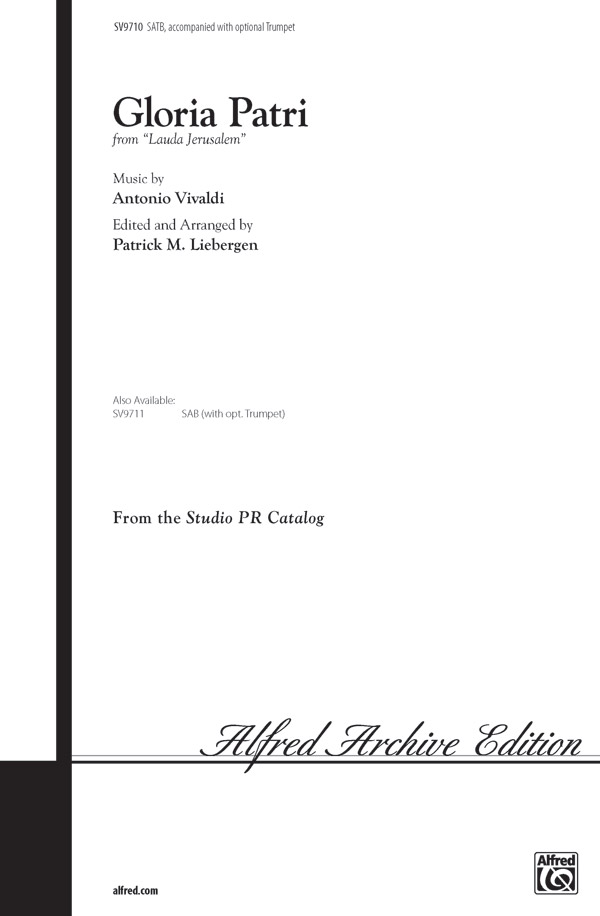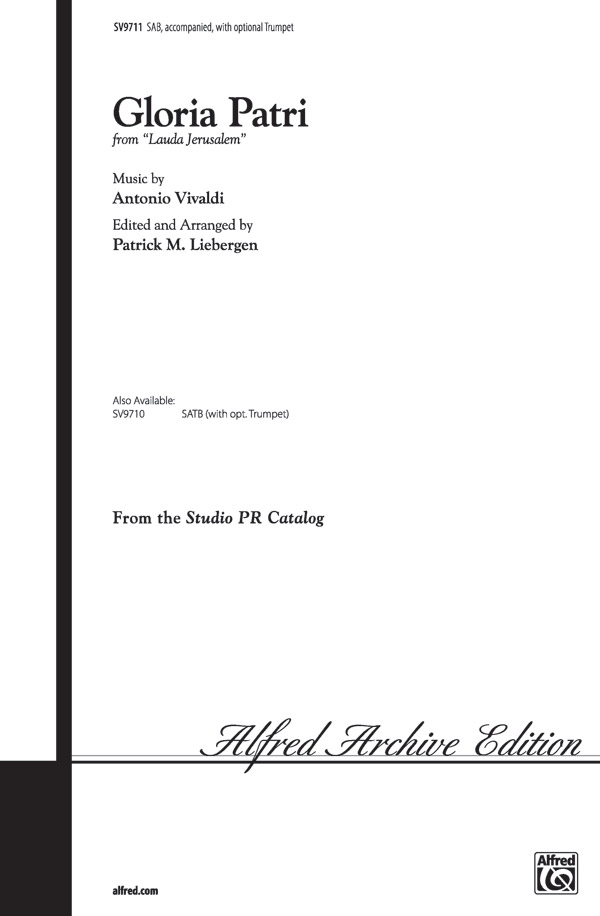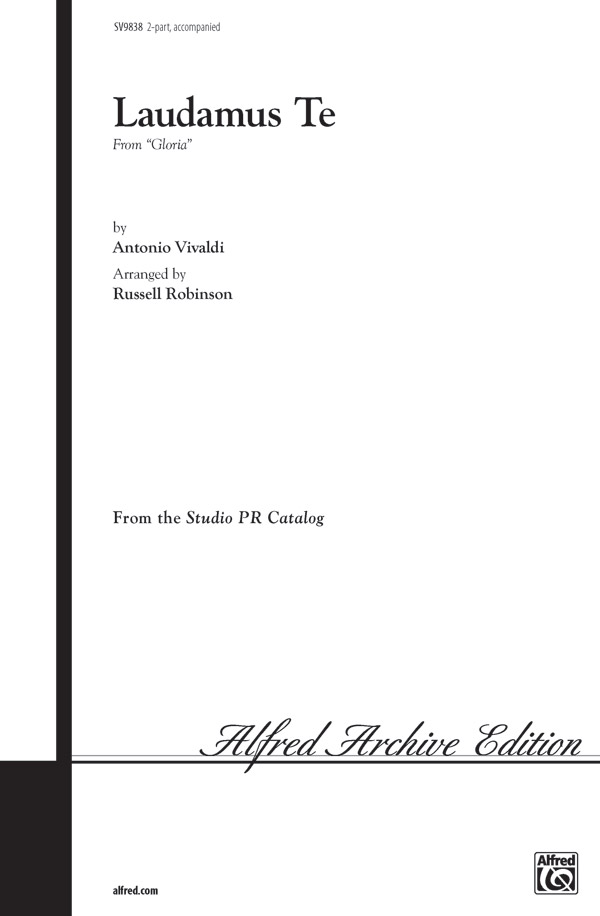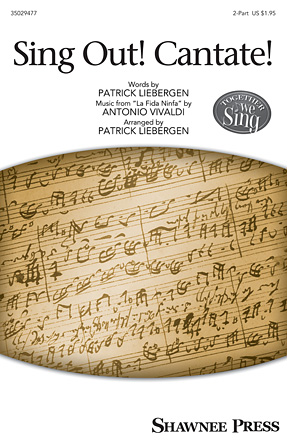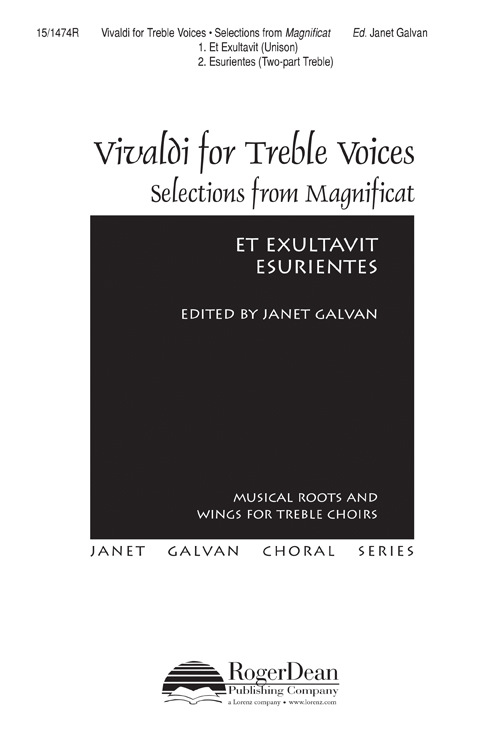In Celebration of the Human Voice - The Essential Musical Instrument
Home | Doo Wop | Barbershop | World | Contemporary | Christian | Vocal Jazz | Choral | Christmas | Instructional | Arrangements
Classical | Opera | Musicals | Personality | Young Singers | Disney | Videos | Songs | The Artists

Antonio Vivaldi
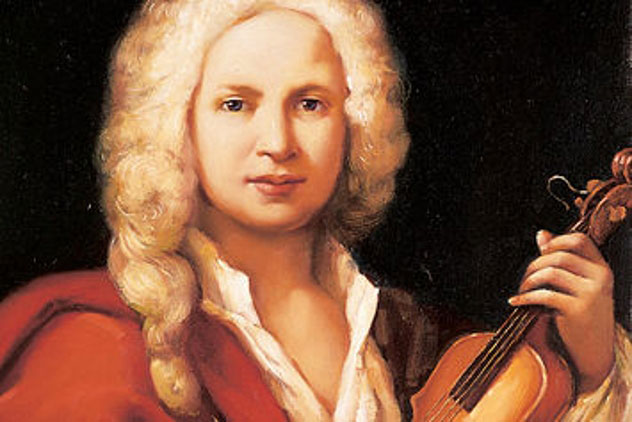
Antonio Lucio Vivaldi was an Italian Baroque composer, virtuoso violinist, teacher, impresario, and Roman Catholic priest. Born in Venice, the capital of the Venetian Republic, Vivaldi is regarded as one of the greatest Baroque composers. His influence during his lifetime was widespread across Europe, giving origin to many imitators and admirers and was paramount in the development of Johann Sebastian Bach's instrumental music and the French concerto (Michel Corrette, Jean-Joseph de Mondonville, Louis-Nicholas Clerambault). Vivaldi composed many sacred choral works and more than fifty operas. His best-known work is a series of violin concertos known as the Four Seasons. Many of his compositions were written for the all-female music ensemble of the Ospedale della Pietà, a home for abandoned children. Vivaldi had worked as a Catholic priest for 18 months and was employed from 1703 to 1715 and from 1723 to 1740. Vivaldi also had some success with expensive stagings of his operas in Venice, Mantua and Vienna. After meeting the Emperor Charles VI, Vivaldi moved to Vienna, hoping for royal support. However, the Emperor died soon after Vivaldi's arrival, and Vivaldi himself died in poverty less than a year later. |
Songbooks, Arrangements and/or Media
Displaying 1-15 of 15 items.
Antonio Vivaldi : Gloria Vocal score of Vivaldi's Gloria, for soprano and alto soloists, SATB choir and orchestra. Edited by Jasmin Cameron. A well-established piece in the modern choral repertoire, Vivaldi's Gloria was, like much of his music, ignored from his death until relatively recently. Antonio Vivaldi : Vivaldi Opera Arias for Mezzo-Soprano/Alto  Vivaldi's operas have been rediscovered in recent years to be thrilling vocal showpieces, championed by Cecilia Bartoli, Ewa Podles, and many others. This new edition was produced by Ricordi in collaboration with the Istituto Italiano Antonio Vivaldi of Venice. With extensive introductory historical articles. Songlist: Nel profondo cieco mondo from ORLANDO FURIOSO (Vivaldi), Sol da te mio dolce amore from ORLANDO FURIOSO (Vivaldi), Sorge l'irato nembo from ORLANDO FURIOSO (Vivaldi), Se cresce un torrente from ORLANDO FURIOSO (Vivaldi), Così potessi anch'io from ORLANDO FURIOSO (Vivaldi), Fingi d'avere un cor from ARSILDA (Vivaldi), Precipizio è del mio petto from ARSILDA (Vivaldi), Di Cariddi li vortici ondosi from ARSILDA (Vivaldi), Di verde ulivo from TITO MANLIO (Vivaldi), Tu dormi in tante pene from TITO MANLIO (Vivaldi), Qual serpe tortuosa from LA FIDA NINFA (Vivaldi), Cento donzelle festose, e belle from LA FIDA NINFA (Vivaldi) Antonio Vivaldi : Vivaldi Opera Arias for Opera Arias for Soprano  Vivaldi's operas have been rediscovered in recent years to be thrilling vocal showpieces, championed by Cecilia Bartoli, Ewa Podles and many others. This new edition was produced by Ricordi in collaboration with the Istituto Italiano Antonio Vivaldi of Venice. With extensive introductory historical articles. Includes arias from Orlando furioso, Arsilda, La fida ninfa, and Tito Manlio. These two volumes of operatic arias represent the recent scholarship that is uncovering the immense treasures of Vivaldi's theater music...there are simple arias with short ranges and slow tempos as well as elaborate, highly ornamented arias suitable for the most extravagantly skilled virtuoso...these volumes, and ones that are sure to come for other voice types, are well worth adding to the collection of every music library.--Journal of Singing Songlist: Un raggio di speme from ORLANDO FURIOSO (Vivaldi), Poveri affetti miei from ORLANDO FURIOSO (Vivaldi), Io son quel gelsomino from ARSILDA (Vivaldi), Tornar voglio al primo ardore from ARSILDA (Vivaldi), Quel usignolo from ARSILDA (Vivaldi), Alma oppressa da sorte crudele from LA FIDA NINFA (Vivaldi), Il mio core a chi la diede from LA FIDA NINFA (Vivaldi), Destin avaro from LA FIDA NINFA (Vivaldi), Alla caccia d'un bello adorato from TITO MANLIO (Vivaldi), Non ti lusinghi la crudeltade from TITO MANLIO (Vivaldi), Fra le procelle from TITO MANLIO (Vivaldi), Ti lascierei gl'affetti miei from TITO MANLIO (Vivaldi) Antonio Vivaldi : Opera Arias for Tenor  Selection of 12 arias for tenor based on critical editions of Catone in Utica Songlist: Dovea Svenarti Allora, La Tiranna Avversa Sorte, Siano Gl'Astri A Me Tiranni, La Mia Gloria Ed Il Mio Amore, Non So Donde Viene, Non Tempesta Che Gl'Alberi Sfronda, Perdero La Bella Mia, Ti Stringo In Quest'Amplesso, Mal S'Accende Di Sdegno Il Tuo Core, Alme Perfide, Tu Vorresti Col Tuo Pianto, Sento Che L'Alma Teme Antonio Vivaldi : Magnificat RV610a/RV611 Cantico for 2 SATB Choirs and Double Orchestra. English and Latin Text. Songlist: Magnificat Anima Mea (Vivaldi), Et Exultavit (Vivaldi), Et Misericordia (Vivaldi), Fecit Potentiam (Vivaldi), Deposuit Potentes (Vivaldi), Esurientes (Vivaldi), Suscepit Israel (Vivaldi), Sicut Locutus (Vivaldi), Gloria Patri (Vivaldi), Et Exultavit(Ii) Vivaldi, Quia Respexit (Vivaldi), Quia Fecit (Vivaldi), Esurientes (Ii) Vivaldi, Sicut Locutus (Vivaldi) Antonio Vivaldi : Gloria RV589 For 2 Sopranos, Contralto, SATB Chorus and Orchestra. English and Latin Text. Songlist: Et in terra pax (Vivaldi-Gloria), Laudamus Te, Propter Magnum Gloria, Domine Deus, Agnus Dei (Vivaldi-Gloria), Qui sedes (Vivaldi-Gloria), Cum Sancto Spiritu (Vivaldi-Gloria), Domine Fili Unigenite, Gloria In Excelsis Deo Antonio Vivaldi : Gloria RV589 Latin & English text. Songlist: Et in terra pax (Vivaldi-Gloria), Laudamus Te, Propter Magnum Gloria, Domine Deus, Agnus Dei (Vivaldi-Gloria), Qui sedes (Vivaldi-Gloria), Cum Sancto Spiritu (Vivaldi-Gloria), Domine Fili Unigenite, Gloria In Excelsis Deo Antonio Vivaldi : Dixit Dominus (Psalm 109), RV 807 Critical edition, for 2 sopranos, contralto, and 2 tenor soloists, SATB chorus, 2 oboes, trumpet, and strings. With critical commentary in English. Antonio Vivaldi : Gloria This is the choral score of the most famous of the several Vivaldi works with the title of "Gloria." This edition and translation by Clayton Westermann features vocal text both in Latin and English, and a piano reduction of the orchestral parts (including figured bass). There is also a short preface by the editor to explain performance practice. The score has 76 pages and is very legible. Includes: Gloria in Excelsis * Et in Terra Pax * Laudamus Te * Gratias Agimus Tibi * Propter Magnam Gloriam * Domine Deus * Domine Fili Unigenite * Domine Deus, Agnus Dei * Qui Tollis * Qui Sedes ad Dexteram * Quoniam tu Solus Sanctus * Cum Sancto Spiritu. Songlist: Gloria in Excelsis, Et in Terra Pax, Laudamus Te, Gratias Agimus Tibi, Propter Magnam Gloriam, Domine Deus, Domine Fili Unigenite, Domine Deus, Agnus Dei, Qui Tollis, Qui Sedes ad Dexteram, Quoniam tu Solus Sanctus, Cum Sancto Spiritu Antonio Vivaldi : Magnificat This edition, 70 pages and edited by Clayton J. Westermann, actually represents both versions of Vivaldiis work named Magnificat. Editorial and performance suggestions are presented in brackets, including tempo and dynamic markings. There are alternate versions of several of the sections and the choir and soloist parts are presented on separate staves over the piano reduction. Includes: Magnificat * Et Exultavit * Et Misericordia * Fecit Potentiam * Deposuit * Esurientes * Suscepit Israel * Sicut Locutus * Gloria * Et Exultavit (2nd version for Apollonia) * Quia Respexit (2nd version for La Bolognese) * Quia Fecit (2nd version for Chiaretta) * Sicut Locutus (2nd version for Albetta). Antonio Vivaldi : In Exitu Israel The source of this edition of Antionio Vivaldi's In Exitu Israel is the manuscript found in the Biblioteca Nazionale in Turin, Raccolta Renzo Guirdano, Opere Sacre Vol. II (No. 16). The score is inscribed: In exitu Israel del Vivaldi. In this work Vivaldi combines and antique style, as refelected by modal treatment, with Baroque tonality and basso continuo. Antonio Vivaldi : Introduction and Gloria This Vivaldi work in D Major, RV 639 and RV 588, features an Introduction, "Jubilate," which is an aria for alto soloist, followed by a short recitative, and then the main work for mixed chorus and alto soloist, "Gloria." This vocal score presents the work in Latin, with each voice on a separate staff, including solos and a piano reduction of the orchestral portion for accompaniment or rehearsal. 80 pages Includes: Jubilate, o amoneni * In tua solemni pompa * Gloria * Et in terra pax * Laudamus te * Gratias agimus tibi * Domine Deus * Domini Fili unigenite * Domine Deus, agnus Dei * Qui Tollis * Qui sedes * Quoniam to solus sanctus * Cum sancto Spiritu. Antonio Vivaldi : Gloria The memorable tunes and infectious optimism of Vivaldi's Gloria have made it one of the most popular choral works in the repertoire. For this edition, the distinguished Vivaldi scholar Paul Everett has returned to the autograph manuscript as the most authoritative source. Both full and vocal scores make clear distinction between original and editorial markings, and information on performance practice is relevant without being prescriptive. The vocal score includes an orchestral reduction for rehearsal purposes, and the full score is supplemented by a comprehensive critical commentary and continuo realization. It also includes a unique transcription of Ruggieri's 'Cum Sancto Spiritu', on which Vivaldi based his own setting. |
Displaying 1-30 of 30 items.
Vivaldi's Gloria is given a new role as and Easter introit in this concept for Resurrection morning. A brief excerpt from the masterwork is re-tooled with new words, announcing the risen Christ with classic grace. Energizing and brilliant with purpose, the appeal of this popular melody is universal.
Perform this Vivaldi masterwork in one of many ways, including: choir and keyboard (piano or organ), choir and echo choir, or choir(s) with brass quartet(s). A truly versatile publication. The piece is in fanfare style and is suitable for secular or sacred use year round, including holiday concerts. Ideal for festivals and adjudications. As with all Dr. Liebergen's editions, it contains editor's notes and performance suggestions.
Seamlessly incorporating Vivaldi's Gloria as a focal point, Christmas Gloria proclaims the good news of Christmas with a new text coupled with the Vivaldi. Truly creative and festive!
GLORIA is a setting of the hymn of praise from the traditional Latin Mass. The work is divided into twelve seperate movements, which include eight choruses, one aria for soprano, two arias for alto and a duet for two sopranos. The final movement is a setting of the words Cum Sancto Spiritu, in gloria Dei Patris. Amen. (with the Holy Spirit, the glory of God the Father. Amen.). This exuberant conclusion is a fuge which Vivaldi adapted from the final section of a GLORIA composed in 1708 by Giovanni Maria Ruggeri. Ruggeri was a colleague of Vivaldi in Venice. Vivaldi expanded Ruggeri's work into a joyous finale in praise of the Holy Spirit.
Arranged for the Allegro Choirs of Kansas City and set for SATB voices, harpsichord or piano, and string quartet, Vivaldi is celebrated by or perhaps even introduced to your singers in this smart edition. Optional children's choir or ensemble is included, helping create a terrific opening masterwork for choirs of all ages.
Arranger: Jacob Narverud | Composer: Antonio VivaldiAntonio Vivaldi
A straightforward Latin text and well-written vocal parts give many opportunities to develop choral techniques, impress adjudicators, and wow audiences. Add the optional flute and cello parts to enhance this winner from master composer Antonio Vivaldi. Quality repertoire for mixed choirs! An informative note from the editor and a handy IPA guide are included in the publication.
Domine Fili unigenite is found in Vivaldi's GLORIA, his most famous choral work. GLORIA is set for eight choruses, arias for a soprano and alto and a duet for two sopranos. It also includes instrumental parts for oboe, trumpet, strings and continuo. The very energetic seventh movement of the work is set to the words Domine Fili unigenite, Jesu Christe (Lord, only begotten Son, Jesus Christ).
From the Vivaldi Magnificat, this edition is a perfect selection to introduce your treble chorus to Baroque style! An excellent choice for festival and competition. In Latin. Available: Unison Treble. Duration: ca. 2:00.
Your developing choirs may now sing this exceptional masterwork from Vivaldi. Dr. Russell Robinson has captured the quality of the original work while bringing it within the reach of younger choirs. Improve any concert with this extraordinary addition to your repertoire!
This Russell Robinson edition is part of our new Developing SATB Repertoire series designed to bring great choral repertoire to developing choirs and maintain performance integrity with four-part literature. Sure to be a hit!
Contents: Gloria (SSAA) - Et In Terra Pax (SSAA) - Laudamus Te (SA) - Domine Deus (Unison) - Quoniam tu Solus Sanctus (SSAA) - Cum Sancto Spiritu (SSAA).
From Vivaldi's ever-popular Gloria, this is the joyous opening movement arranged for male voices. An excellent selection for concert or festival!
Arranger: John Leavitt
Energetic and well-loved, this Baroque masterpiece by Vivaldi is easy to learn with its intuitive, melodic and harmonic phrasing. Catherine DeLanoy arranges it with the changing voice in mind as either a stand alone 3-part mixed piece or with the addition of an optional baritone for part, or all, of the piece. Available: 3-part mixed, optional Baritone. Duration: ca. 2:48.
Arranger: Catherine DeLanoy
This Baroque opera chorus from Vivaldi's La fida ninfa was first heard at the grand opening of the Teatro Filarmonico in Verona, Italy. Available for 2- and 3-part choirs, this edition includes buoyant choral polyphony, a jubilant music text, and an optional flute obbligato.
From the Vivaldi Gloria. Available: SA. Performance Time: Approx. 2:40.
Arranger: John Leavitt
From the third act of Vivaldi's opera La Fida Ninfa, this triumphant chorus in 3/4 is built upon solid 3-part choral writing. An optional flute duet, timpani part, and featured small ensemble in the B section add interest to Dr. Liebergen's joyful arrangement. Characteristic harmonies, clear choral phrasing, and appropriate vocal ranges make this Baroque masterwork easy to teach (and learn).
This Gloria is from Vivaldi's Dixit. It's up-tempo, fun to sing, and has much of the same musical flavor as Vivaldi's better known work. Sing it in English or Latin. A great work for contest or festival.
Patrick Liebergen has provided us with a well-crafted edition from the final section of Vivaldi's setting of Psalm 147. This energetic chorus will add a joyous touch to any concert. Latin pronunciation guide and alternate English text are included.
Patrick Liebergen has provided us with a well-crafted edition from the final section of Vivaldi's setting of Psalm 147. This energetic chorus will add a joyous touch to any concert. Latin pronunciation guide and alternate English text are included.
Dr. Russell Robinson has contributed this Vivaldi classic to our Easy Choral Masterworks series. Now young choirs (and even developing older choirs) can perform this staple of choral repertoire. A great performance choice while exposing your young students to the great works!
Selected from Vivaldi's opera, La Fida Ninfa, this 2-part arrangement with a music-themed text is joyous and rhythmic. The work consists of simple part-reading and uses repetition for easy learning and includes parts for optional flutes to add shine to your performance. A wonderful concert or festival selection for young voices.
Arranger: Patrick Liebergen | Musical: La Fida Ninfa
Antonio Vivaldi was one of the great Italian, Baroque composers. Equally at home when writing for either instruments or singers, this work for two part choir, originally a duet for two sopranos, shows off both the singers and the players. A keyboard part along with 2 cello parts--included in the back of the octavo--provide a wonderful example of Baroque stylings. The vocal music is an example of melismatic vocal writing and offers your singers the opportunity to experience this important style.
Arranger: Henry Leck
These two solos from the Vivaldi Magnificat are well suited for treble voices, and the optional orchestration will enhance festival use.
![]() Vocal Harmony Arrangements - Home
Vocal Harmony Arrangements - Home
Christian | Gospel | Standards | Musicals | Specialty | World | Barbershop | Contemporary | Vocal Jazz | Choral | Christmas
Mixed Voices | Female | Male | 8 Parts | 6 Parts | 5 Parts | 3 Parts | 2 Parts | Medleys | Solo | Folio Series | New Releases
Select a Category |
Want to Sing? - Find a Chorus Near You
List of Choruses by State | List of Choruses by City











